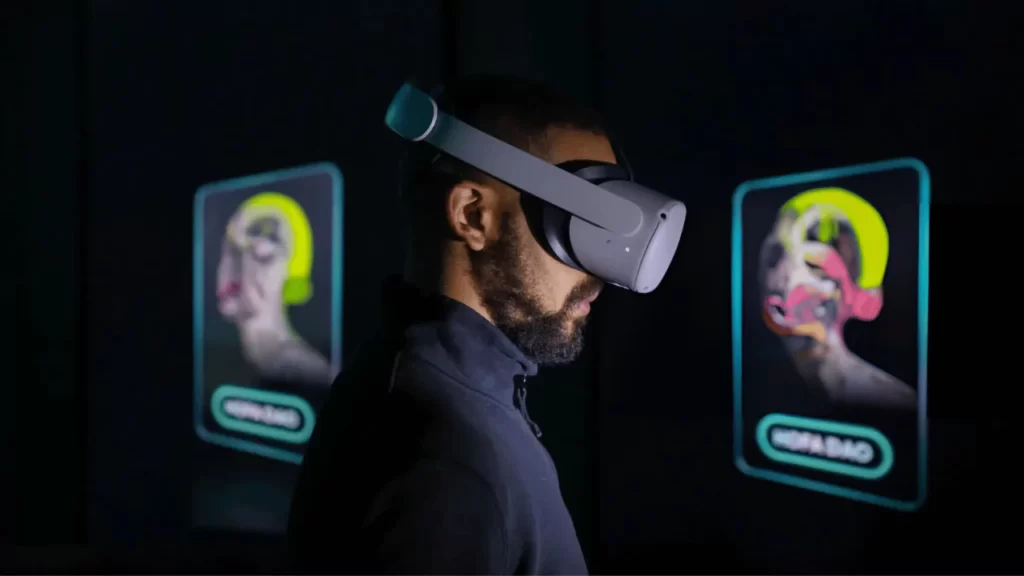Oculus Quest 2 lagging can lead to disruption in your VR experience and this can occur due to insufficient hardware resources, software error, poor connectivity, or misconfigured device settings.
To fix the problem, first, you need to check your internet connection whether it is stable and most importantly it should meet the recommended minimum of 20 MBPS for download and upload. Conduct a speed test to know the status of the connection and bring the router close to the device or upgrade your internet plan.
If you still experience lagging, shuttering, or low FPS issues, then go through the other troubleshooting steps. These fixes can help you to solve the performance issue on Oculus Quest 2.
How to Fix Oculus Quest 2 Lagging?
You can also upgrade the router and router firmware and remove all the interference from the source to improve the Air Link performance. Use a 5 GHz frequency router for a faster data rate and also place the router at an elevated position. Next, move on with the methods that would fix the lagging issue.
1. Reboot the Headset
Often a simple reboot of the headset can resolve all the issues, so hold the power button for a few seconds and then from the menu choose the option Restart. Try to run any game to verify whether the issue has been fixed.
2. Restart the Laptop/PC and Kill Unnecessary Process
Debugging is always a better choice for a good start, so unplug the USB cable from the PC and turn off the Oculus Quest 2. Wait for a few seconds and then restart the PC and turn on Oculus Quest 2. Now, go to Windows Task Manager and kill processes that are either draining resources or not required. Start the Oculus software and plug in the Quest 2 headset. Finally, launch the Oculus link and test whether it is making any difference.
3. Update the Software
You need to ensure that Oculus Quest 2 is running on the latest software version which can fix minor bugs and also improve the performance. So, on your headset, go to Settings, select About, tap on Software Update, and wait for the process to complete.
4. Ensure that the Laptop/PC is Compatible With the Oculus Link
Is your PC not compatible with Oculus Link?, then even if it gets connected it will lead to user performance or lagging issues. So, make sure that your PC meets the minimum specifications that include graphics cards, CPU, and operating memory.
5. Update the Graphics Card
If you are trying to run any game on an outdated graphics card, then it can also create a lagging issue. So, go to Nvidia or AMD and install the latest drivers for the compatible graphics card. This should improve the performance issue and also solve shuttering errors.
6. Stop Unnecessary Applications
If too many applications are running at the same time, then it is draining the resources from the Oculus Quest 2 which further leads to lagging issues. So, close every unnecessary application, go to the Universal menu, select App, and click on the Quit button. This will help the device to function optimally as it frees a lot of resources.
7. Reconfigure the Device Settings
You can also reduce the refresh rate, adjust the render resolution, and disable the Guardian option to fix the lagging issue in Oculus Quest 2. Here are the steps that you need to follow:
To reduce the refresh rate, go to Settings, click on Device, tap on Refresh Rate, and select a rate that is much lower than the one already present.
Next, again from the Settings, go to Device and tap on Resolution to choose a lower setting. If Oculus Quest 2 is in a smaller space, then you can disable the Guardian option, for which you have to go to Settings, select Guardian, and toggle the Disable button.
8. Factory Reset the Oculus Quest 2
If the above solutions are not enough to fix the problem, then you can factory reset the Oculus Quest 2 which will restore the settings to its factory defaults. This process will erase all your customized settings and recent data.
So, before you continue it is always advised to create a backup and then go to Settings, and tap on About > Factory Reset to perform a factory reset. Wait for the process to complete and try to use Oculus Quest 2 without any lagging.
9 Use a Virtual Desktop
Virtual Desktop is a third-party application that can provide a customizable experience. So, purchase the app from the Oculus Store to use Virtual Desktop. You have to download and install the virtual Desktop Streamer app. Next, open the app on Oculus Quest 2 and connect it to the streamer on your PC.
Why is Oculus Quest 2 overheating?
If the fan is not running properly, due to lagging, outdated software issues or the cooling fan is wearing out, then it can lead to the Oculus Quest 2 overheating. So, you need to fix these issues and while playing be conscious to keep the temperatures down.
What is the Oculus Quest 2 Debugging Tool?
Quest 2 Debug Tool is a utility that comes along with Oculus and it is meant for adjusting the settings that include encode resolution, bitrate, and adaptive GPU performance scale. These advanced settings can enhance your VR experience. Go to the Oculus software installation folder and locate the Oculus Debug tool. Run the tool and tweak the Settings. You can alter the ‘Encode Resolution Width’ and ‘Adaptive GPU Performance Scale’. Make only necessary changes and test the performance. You can also set the encoded bitrate to 0 but not to a higher number, otherwise, it can make the Air Link Laggy.
Does Oculus Quest 2 run better on PC?
Yes, if you connect Oculus Quest 2 with a PC, then it can run better. Moreover, it can also run Steam VR and games that are not exclusively available on Oculus.







